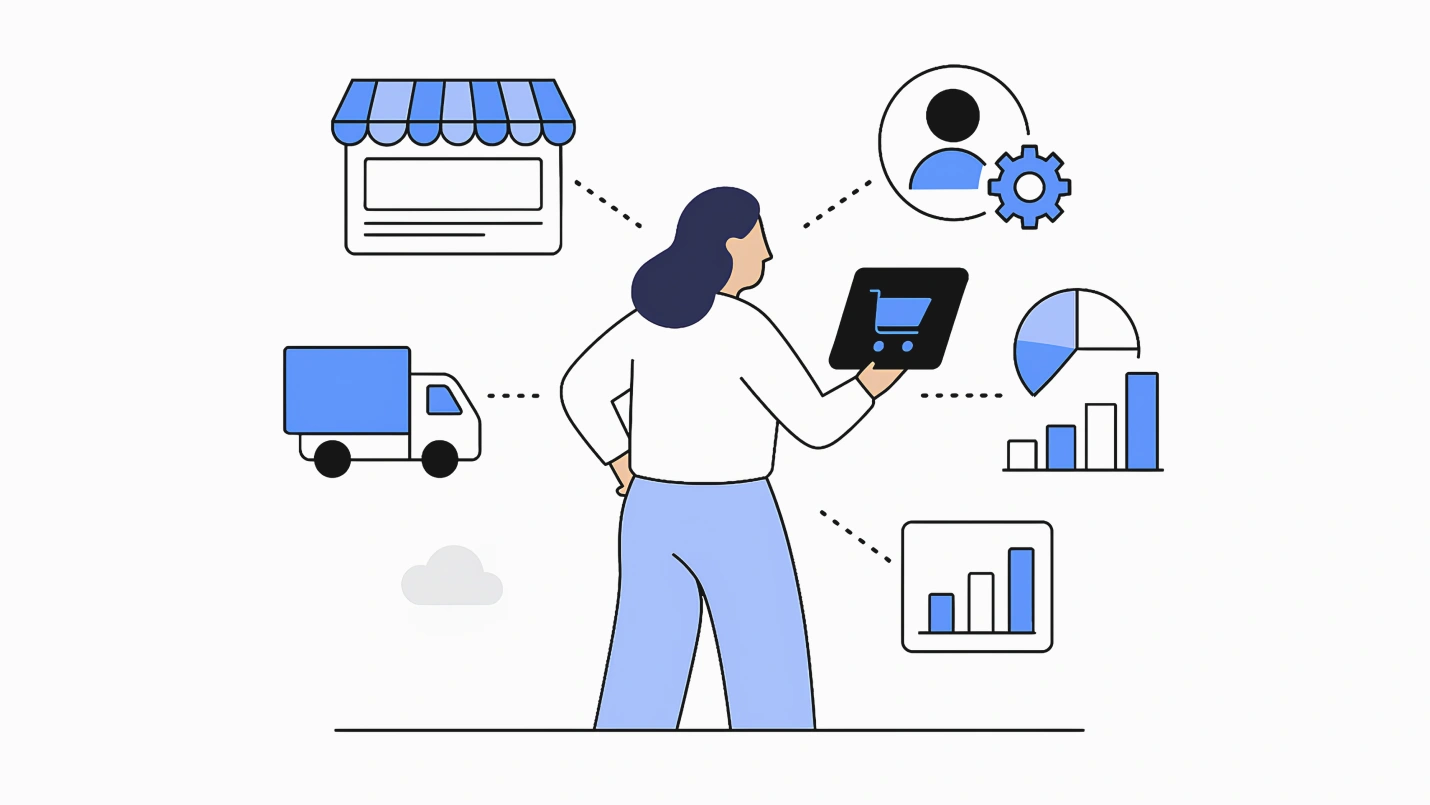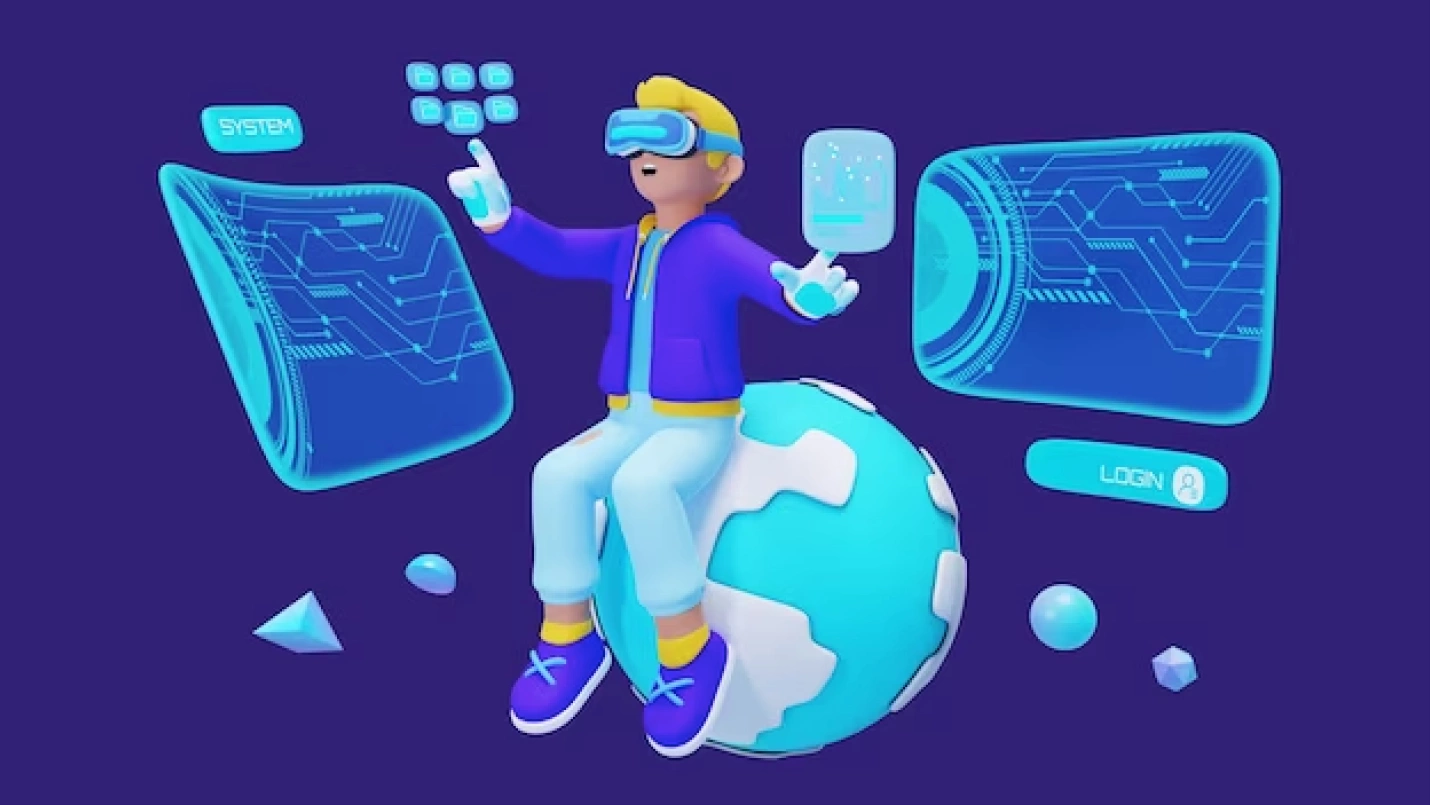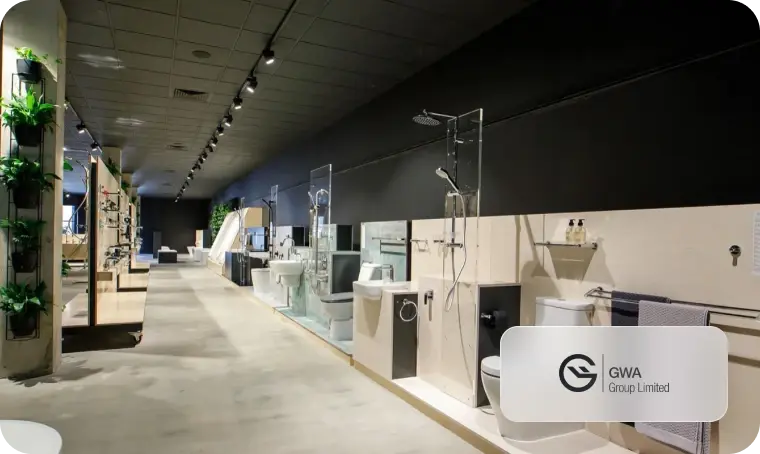Digital transformation is more than a buzzword—it describes a comprehensive strategy for modernizing businesses and helping them better serve their customers.
Legacy retailers like Ikea and Home Depot have been forced to adapt to remain competitive, and digital transformation is helping them compete online, streamline their supply chain, and collect valuable data from modern apps.
Learn how 11 large legacy retailers have successfully transformed their digital systems to remain competitive in today’s world of eCommerce growth.
Understanding Digital Transformation in the Context of Legacy Retailers
Legacy retailers face unique challenges when engaging in digital transformation, but a successful digital transformation offers many opportunities, which we’ll discuss.
The challenges they face include:
- Making large-scale changes across massive organizations
- Continuing to foster the segment of the market that prefers in-store shopping
- Adopting modifications that don’t disrupt a complex supply chain
The opportunities include improving the customer experience by offering both online shopping and a meaningful in-store experience, along with supply chain optimization that makes them more efficient and competitive. Continuous innovation can help retailers stay on top of the latest digital transformation trends.
Importance of Digital Transformation for Legacy Retailers
Leadership teams at legacy retailers have been known to rest on their laurels, believing that universal brand recognition and the power of the in-store shopping experience gave them a unique position in the market that eCommerce couldn’t erode.
However, the COVID-19 pandemic changed everything, accelerating the trend to shop online and winning over even the most stubborn members of the in-store shopping market. It also highlighted issues with the supply chain and the need to update legacy systems to streamline processes.
How digital transformation is revolutionizing the retail industry
Digital transformation is changing the retail industry in several ways, including:
- Advanced data collection and analysis through modern apps, data lakes, and interconnected systems
- Streamlined supply chain technology through data analysis, Machine Learning (ML), Internet of Things (IoT) technology, route optimization through Artificial Intelligence (AI), and more
- Greater personalization for customers
- Online shopping and delivery

We respect your privacy. Your information is safe.
Overview of Successful case Studies for Inspiration
In this blog post, we’ll explore 11 examples of legacy retailers who have recently engaged in digital transformation efforts to streamline the supply chain, improve the customer experience, and remain competitive in a world of high-tech, online shopping.
We’ll look at the success stories of retail giants, from Walmart to Nike, to learn about the digital transformation strategies they’re employing and the technologies they’re using.
Case Study #1: Walmart
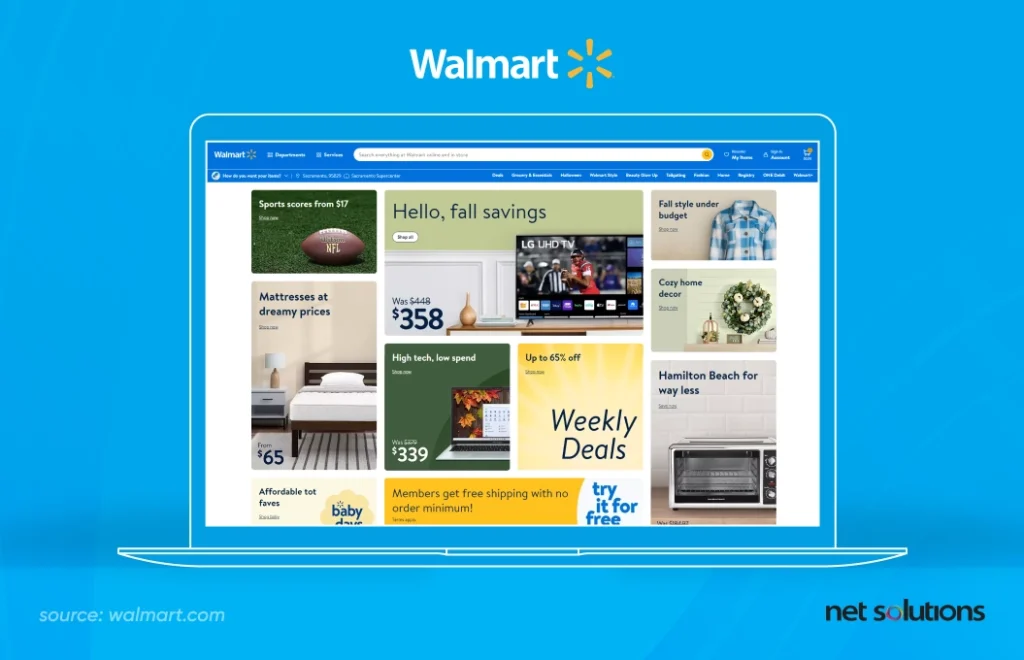
Walmart is a powerful example of a significant retailer evolving and taking digital transformation seriously.
Using technology to optimize multiple points in its supply chain, Walmart has expanded its inventory and continues offering highly competitive products. The retail giant has also expanded its eCommerce presence with the purchase of Jet.com, further penetrating the urban millennial market.
Walmart’s digital transformation projects include:
- At every point, a digitally optimized supply chain uses digital services like Salsify to aggregate data from suppliers and quickly order new inventory online.
- Machine learning helps improve and expedite home delivery through route optimization and other tools.
- IoT that unifies in-store and online shopping to offer tailored promotions to customers.
- Significant investments in data lake technology, such as Data Cafe, to learn from the massive volumes of data that the company collects.
- Blockchain technology helps verify information shared throughout the supply chain among third-party logistics companies and suppliers.
Results : Walmart’s willingness to stay on top of digital trends allowed it to remain relevant in a world where eCommerce companies are gaining a greater share of the market year after year. The company has bolstered its brick-and-mortar brand and online presence, expanding its reach to a new generation of consumers.
Case Study #2: Nike
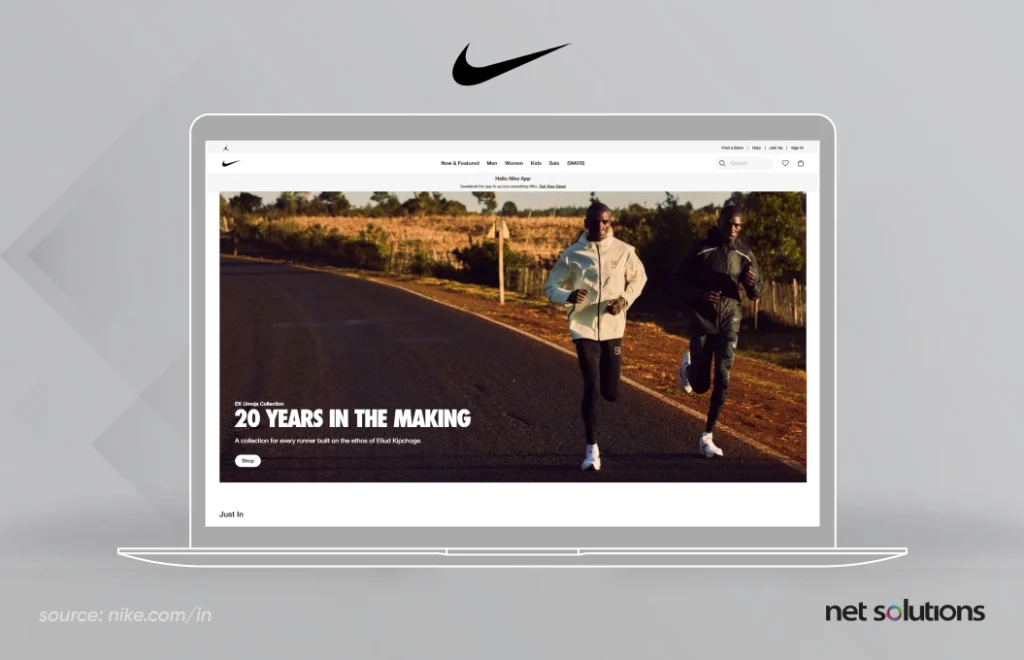
Nike has always been at the forefront of experience marketing, and recently, it began optimizing its digital technology to enter the new world of Virtual Reality (VR).
The international athletic apparel brand is poised to take full advantage of the Metaverse, where customers can now design their shoes, play games, and wander the virtual world of Nikeland.
Nike’s digital transformation includes:
- Creating Nikeland, a virtual world that seven million customers have visited, sparking engagement and bolstering the brand.
- Robotics used in sorting, packaging, and other key points along the supply chain—Nike calls its collaborative robots “Cobots.”
- Demand-sensing technology combined with inventory optimization platforms has increased the speed of order processing, tripling order capacity during the busy holiday months.
- AI and machine learning to make unique, personalized offers to customers, showcase items they’re more likely to buy and improve delivery methods.
AI in Retail: Transforming the Shopping experience.
Read MoreResults: Nike’s digital transformation has improved engagement among its loyal customers, increased efficiency and capacity throughout its supply chain, and empowered the company to increase sales and customer satisfaction.
Case Study #3: Disney
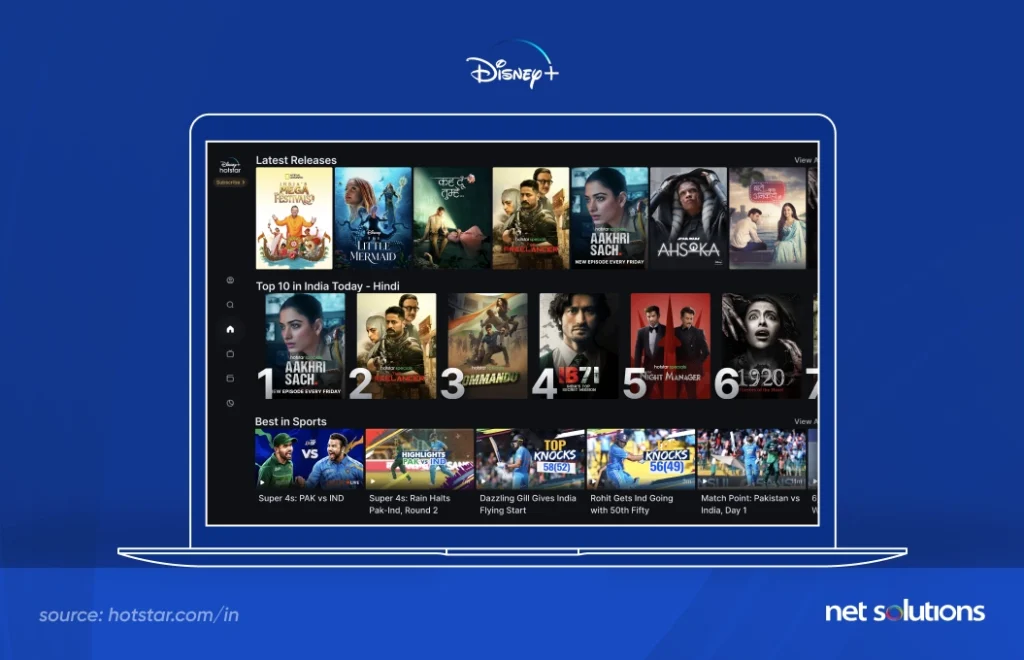
Disney took a risk when introducing Disney Plus into the competitive streaming market, but with 86 million users worldwide and numerous hit shows, the endeavor has proven successful.
Meanwhile, Disney continues to engage its die-hard fan base with new technology, spearheaded by Mike White, Senior VP of Next Generation Storytelling. Yes, that’s a real position at Disney!
Disney’s digital transformation includes:
- VR and Augmented Reality (AR) technology to create an entirely new consumer experience in the Metaverse.
- Blockchain technology through Non-Fungible Tokens (NFTs) that offer digital assets as limited-edition collectibles.
Results : Disney is entering uncharted territory, and they’re still working to determine the future for this emergent technology. The 100-year-old company has reinvented itself numerous times and is in a solid position to thrive in the new digital world.
Case Study #4: Under Armour

Under Armour is known around the world as an athletic apparel company. Still, the retail giant has recently expanded its footprint by purchasing several tech-based fitness apps, including MyFitnessPal, MapMyFitness, and Endomodo, at $715 million.
Why expand into fitness apps? It’s all part of Under Armour’s strategy to build a data-driven business and spark engagement among potential customers. After all, fitness apps deliver massive data about fitness trends and personal habits within their target audience.
Under Armour’s digital transformation includes:
- Investment in data collection and analytics technology to spot health trends. For example, they noticed that Australians were taking to the streets and walking more for fitness. None of their competitors figured this out before Under Armour did.
- Armourbox is Under Armour’s online platform designed to connect customers, where they can share training schedules, favorite products, health goals, and more.
- Personalization through advanced analytics allowing Under Armour to create a subscription shoe service and send tailored offers to key segments and users.
- A comprehensive ERP data center through SAP HANA, using Dell’s EMC Data Domain to keep customer data private.
- An Agile development model across the company, improving efficiency in creating, improving, and maintaining key digital products.
Results : Under Armour increased Customer Lifetime Value (CLTV) through greater engagement and personalized offers. Plus, they’ve used advanced analytics to spot new trends and better understand their fitness-focused market.
Case Study #5: IKEA
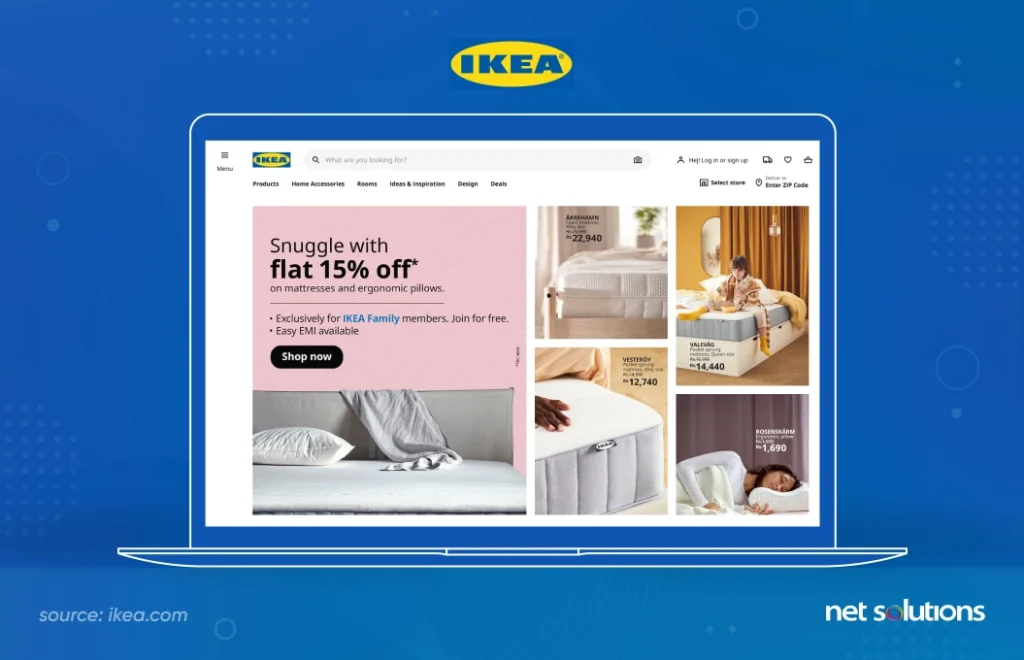
Retail furniture giant IKEA has been around for nearly 80 years, and they have a long history of success as an analog company. Anyone who has been inside an IKEA knows that wandering the furniture maze is an experience.
Unfortunately, the COVID-19 pandemic caused IKEA to close 75% of its brick-and-mortar stores, forcing the company to adapt. They plunged headfirst into their digital modernization, engaging in a complete business transformation. At the same time, they remain committed to putting people first and using technology to support their customer-centric ethos.
IKEA’s digital transformation included:
- Rapidly expanding customer data analytics to better understand and serve customers.
- AR and VR 3D modeling allowing customers to take a 3D model of a piece of furniture, open their phone’s camera, and superimpose the model onto the camera view of their home. This lets customers see exactly how a sofa will look in their living room.
- An increased capacity to handle customer interactions online through the Shop & Go feature on the IKEA app.
- Supply chain improvement, from logistics to fulfillment, through better data collection and a thorough analysis of internal systems. This is only made possible by modern internal apps since legacy systems create data siloes that make it challenging to harness meaningful information.
Results : Ikea experienced massive eCommerce growth, with online sales growing from 7% of their total revenue to 31% in just three years.
Case Study #6: Home Depot
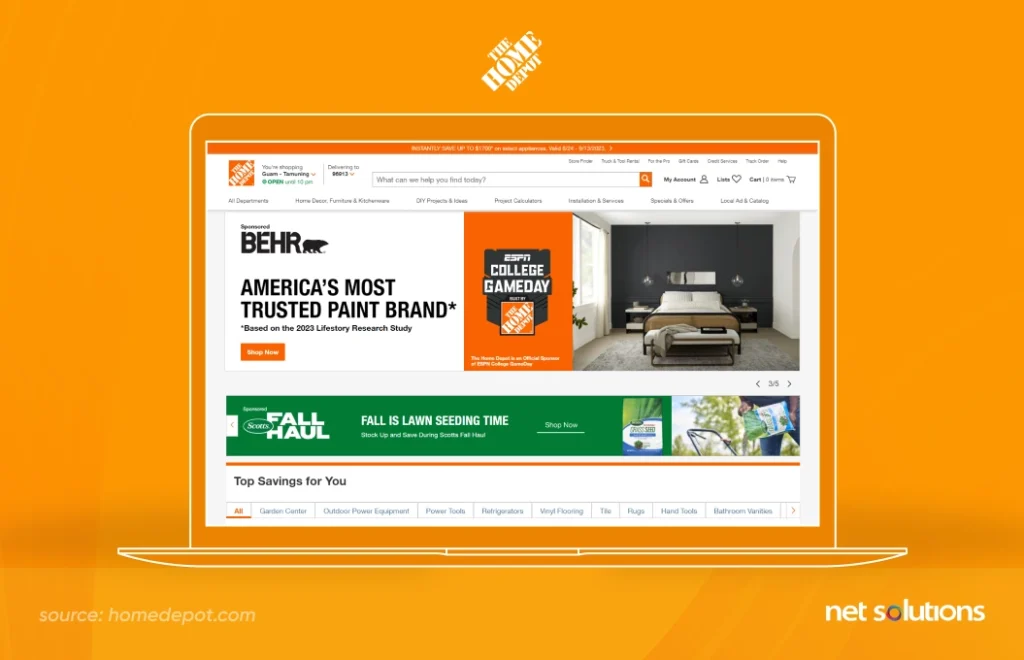
Home Depot has always been a one-stop shop for all things do-it-yourself for customers throughout the U.S. and overseas.
In 2016, however, President of eCommerce Kevin Hoffman spoke publicly about an emerging “do-it-for-me” market—consumers want full-service installation using high-quality products. This meant creating a more integrated experience between eCommerce and brick-and-mortar stores since scheduling installation services is easier online.
Home Depot’s digital transformation included:
- A completely revamped digital experience with new customer-facing systems.
- Online services targeting the growing (often millennial) “do-it-for-me” market.
- Educating employees to create a unified experience where eCommerce and brick-and-mortar services intersect.
Results : Home Depot began its digital transformation before 2020, which meant it was fully prepared for the Covid-19 pandemic. Digital sales grew 86% that year compared to 2019.
Case Study #7: Nespresso
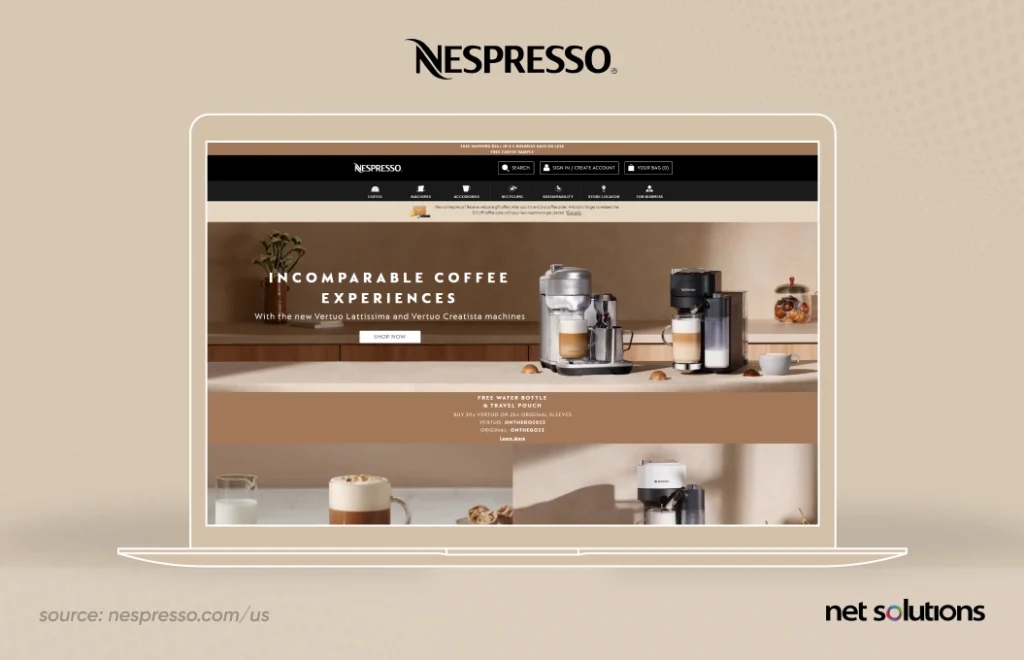
Known for its single-cup coffeemaking method, which uses a machine and coffee grounds packed in airtight pods, Nespresso prides itself on being a “coffee experience” instead of a coffee product. Given its business model and brand, Nespresso wanted to take advantage of personalization technology and other benefits made possible only through digital transformation.
Nespresso’s digital transformation included:
- Personalized communication and offers through superior data collection technologies.
- Leveraging digital channels for ordering, distribution, and other supply chain elements.
- Omnichannel transactions connecting with customers through its retail app, website, WhatsApp, and other channels.
Results : Nespresso’s digital transformation improved customer satisfaction and customer loyalty.
Case Study #8: Tesco
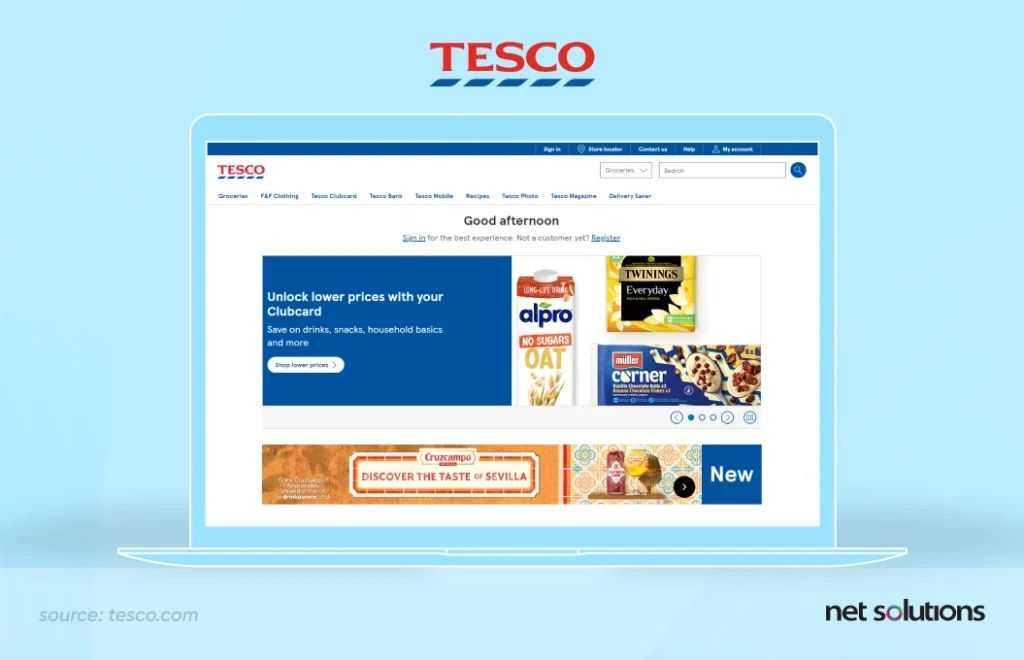
Tesco is a UK-based grocery and general product reseller designated an “essential retailer” during the pandemic. This resulted in massive demand and, as the world remembers, shortages in a range of goods for retailers worldwide.
As you might expect, Tesco experienced massive growth in online shopping, jumping to 1.5 million online orders per week. The increased demand and pandemic-related supply chain challenges increased the urgency for a strategic digital transformation.
Tesco’s digital transformation included:
- Improvements to digital supply chain tracking through upgraded Enterprise Resources Planning (ERP) software.
- AI and Internet of Things (IoT) technology fed into predictive analytics, helping Tesco spot shifts in demand that required attention.
- General app modernization to allow for superior data collection, personalization, and a better online shopping experience.
Results : Tesco experienced greater visibility, planning, and tracking in the supply chain, enabling the grocery retailer to better serve and engage its customers.
Case Study #9: Woolworths

Woolworths is an international brand offering grocery, pharmacy, and household goods for an entire century. Recently, the legacy retailer launched Everyday Market in Australia—an online marketplace offering various products from third-party vendors.
At the time of publication, Woolworths’ Everyday Market has added 11,000 new products to the regular lineup of goods offered by Woolworths stores in Australia. Launching a new platform connecting third-party vendors required a highly strategic digital transformation.
Woolworths’ digital transformation included:
- A customized version of Marketplacer, an integrated operator platform that allowed it to manage fulfillment through third-party vendors such that it integrated with the company’s systems.
- App modernization to ensure that apps could communicate seller information, shipping data, and efficient delivery. The legacy apps simply couldn’t handle this level of integration.
- Data collection and processing capabilities offered by fully modernized and integrated apps.
Results : Woolworths experienced a 20% growth in new eCommerce shoppers through Everyday Market. Following their launch, they also saw steady revenue growth, with grocery adjacent categories (such as electronics and toys) outperforming forecasts.
Case Study #10: McCormick & Company
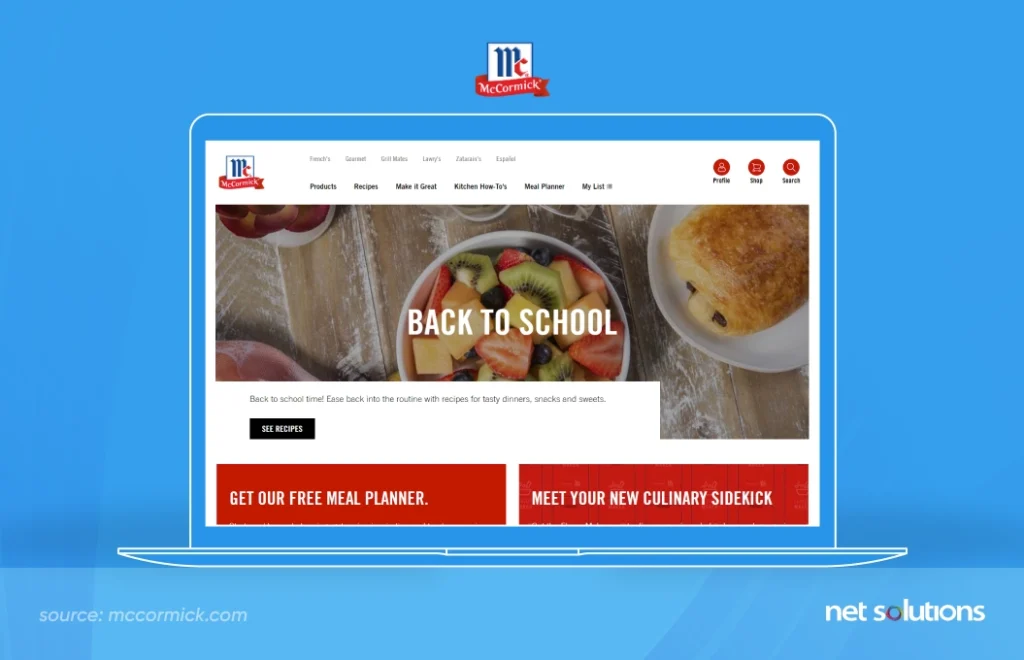
A well-known food conglomerate with a 130-year history, executives at McCormick believed they had exhausted traditional techniques to increase their market share in the spice business.
To increase demand for spices, McCormick created FlavorPrint—a retail application that helped consumers find foods and spices that matched their tastes using predictive analytics. This required modern apps that collected and integrated data, giving them better insights into customers’ tastes.
Flavorprint was so successful that McCormick created its spin-off company, Vivanda, which provides insights for food-services companies to better understand their customers’ “flavor profiles.”
McCormick’s digitally optimized FlavorPrint app included:
- Advanced data processing and predictive analytics to create customer flavor profiles.
- Integrated systems to send recipes to customers and encourage them to buy new spices.
- API integration in later versions of the product offered by Vivanda, the spin-off company, allowing clients in the food industry to identify flavor profiles for their customers.
Results : The app’s beta version alone became extremely popular, with 100,000 subscriptions—boosting sales by 4.9%. Traffic to the McCormick website doubled in the two months following the official launch.
Case Study #11: Euro Car Parts (ECP)
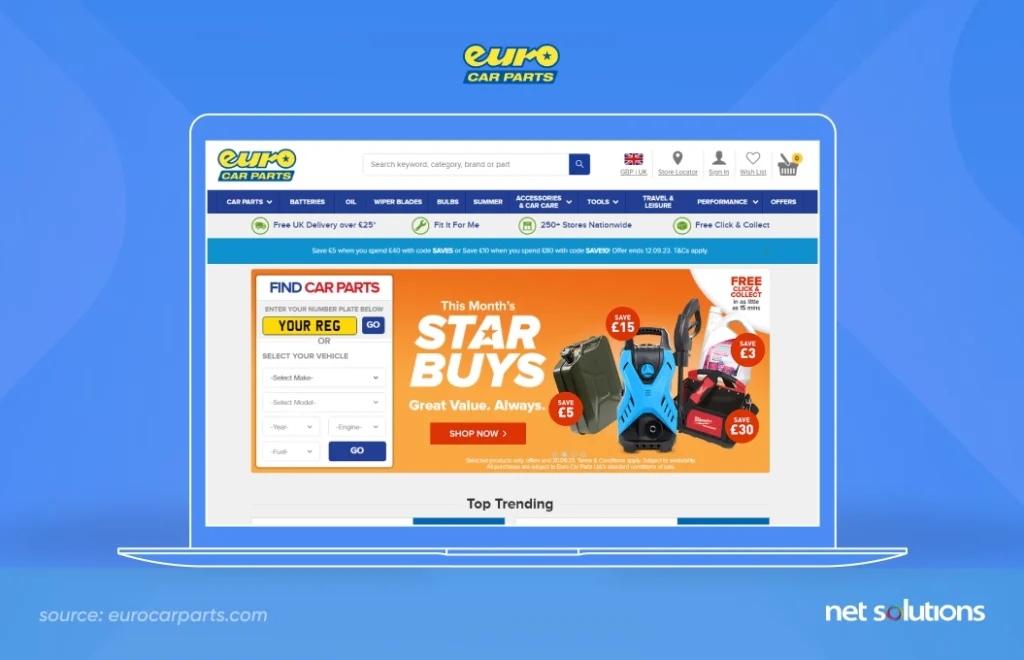
Euro Car Parts (ECP) is a British distributor of automobile parts owned by LKQ, a Fortune 500 company with a global presence. ECP came to Net Solutions before its merger with LKQ, hoping to modernize its business beyond its largely brick-and-mortar operations.
Prior to its digital transformation, ECP generated only $125,000 of revenue annually from online sales, and the team knew they needed a complete digital transformation to improve that revenue stream. After all, their legacy eCommerce site was outdated, struggled to support multiple browsers, and experienced connectivity issues when interacting with backend systems.
ECP’s digital transformation included:
- Building a fully functional website that worked on multiple browsers and integrated cutting-edge User Experience (UX) principles to improve conversion rates and increase uptime through third-party uptime monitoring.
- Modern applications that integrated information across the eCommerce site to handle features like “Click & Collect,” “same-day delivery,” and faster search capabilities.
- Improved site speed for a better customer experience.
- Modern fulfillment technology for just-in-time label shipping and complete integration with warehouse systems.
- Improved SEO through metadata and analysis, allowing products to be displayed in search results in Google SERPs.
Results : ECP quadrupled its orders within four years, and the IRUK Top500 report called ECP out for its outstanding digital experience. ECP moved into IRUK’s Top50 list the following year, a rare honor.
Key Learnings, Takeaways, and Future Trends
The world is changing fast, and legacy companies that refuse to adapt may become irrelevant in short order. Fortunately, more and more executives are beginning to understand digital transformation, allowing these legacy retailers to:
- Harness the power of big data and analytics
- Create a vibrant online marketplace to supplement in-store shopping
- Use AI, ML, and IoT technology to optimize the supply chain
- Modernize apps to eliminate data siloes and interact seamlessly
- Offer omnichannel customer communications for marketing, delivery updates, and more
Looking for a Digital Optimization Partner?
Net Solutions has spearheaded app modernization for massive retailers and legacy organizations, from 2XU to American Golf. We can help you remain competitive in a rapidly changing world using modern apps with scalable architecture, strong data collection capabilities, and seamless integration.
Frequently Asked Questions
Traditional retail companies have been hit with several challenges recently, from the COVID-19 pandemic causing eCommerce to skyrocket to the rise of big data. To remain competitive, legacy retailers engage in digital transformation to better understand their customers, offer easy online shopping, and improve their supply chain efficiency.
Data processing and analysis show no signs of slowing, and top retailers will continue to define their approach to data analytics to become even more competitive.
As AI, ML, and IoT technology continue to blaze new trails, retailers will discover new and exciting ways to serve and engage their customers, streamline their supply chains, and personalize their offers to capture greater market share.
Digital transformation makes it easier to compete by creating better channels to connect with customers, providing a better online experience, and enabling greater personalization through advanced data analytics. Additionally, digital transformation makes it easy to manage the supply chain, thereby reducing costs and increasing margins.
Several factors can influence the odds of digital retailing success, from supply chain issues to order accuracy. User Experience (UX) also significantly increases conversions since customers buy from companies with websites and apps that are easy to use. Customers also value having multiple channels to connect with support and solve problems when they arise.

